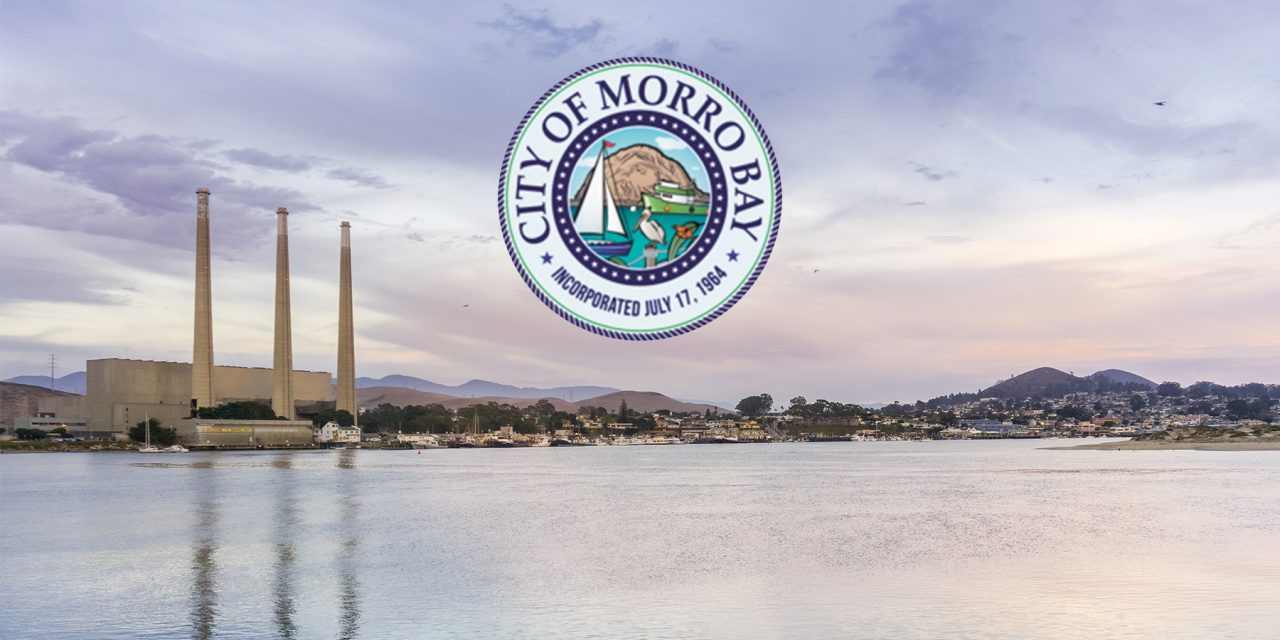Get to know your candidates campaigning for your vote this November
MORRO BAY — With three seats on the Morro Bay City Council — Mayor and two council members — up for grabs on Nov. 8, Morro Bay Life sent a half dozen questions about current and future issues to the candidates.
Morro Bay Mayoral Candidates Statement and Bio
Dr. John Headding (69) is Morro Bay’s Incumbent Mayor seeking his third term. Dr. Headding is a retired Pharmacist who came here with his family some 12- years ago from Cambria to start Morro Bay Drug & Gift.
“As the Mayor and a Councilmember for eight years, I want to continue to move forward the important strategic issues identified in our city’s strategic plan.”
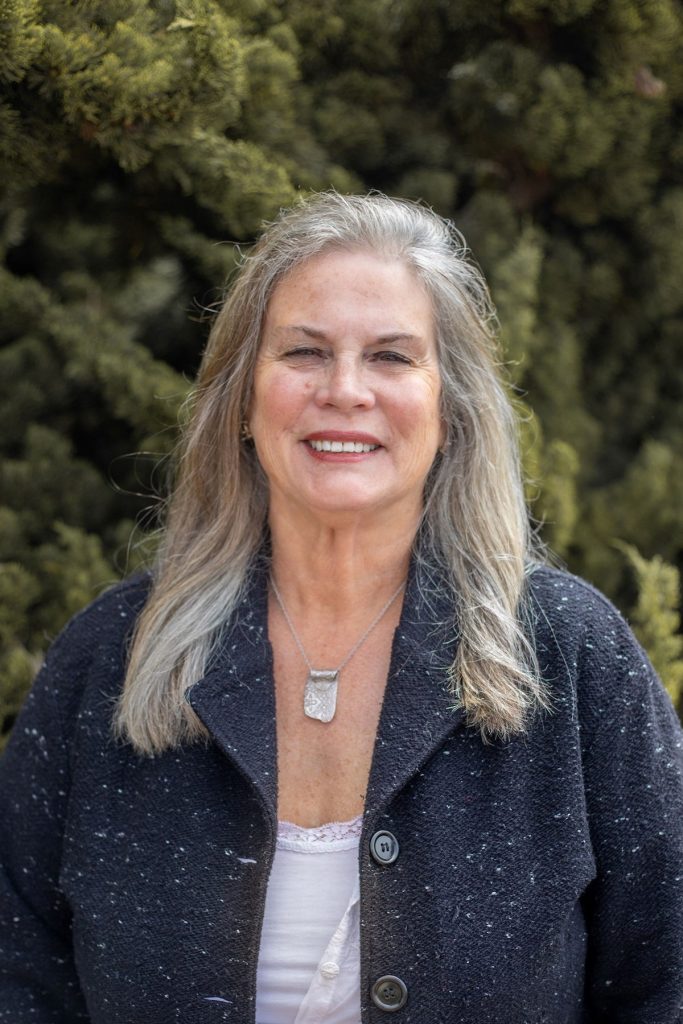
Mayor Candidate Carla Wixom 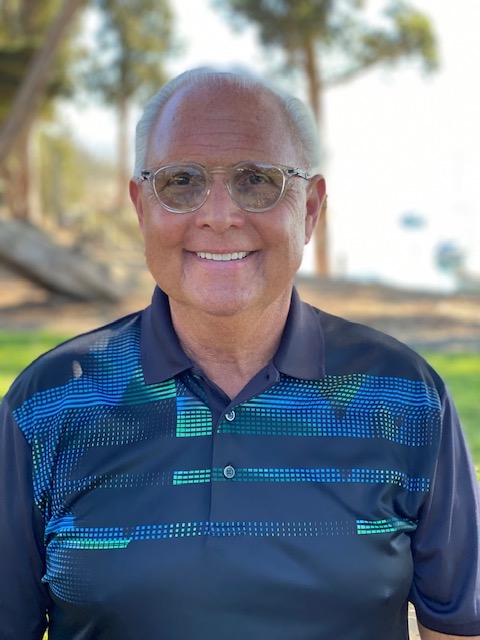
Mayor Candidate Dr. John Headding
Carla Wixom (64) is a self-employed restaurateur and owner of Carla’s Country Kitchen. She has been in Morro Bay for over 44 years.
“Morro Bay has many changes and challenges ahead of us. The quality of life we value living here needs to balance with those changes. I will make decisions for the good of all residents.”
Morro Bay City Council Statements and Bio
Robin “Zara” Landrum didn’t provide demographic information with our questionnaire.
“I love this City and want to affect positive change at a time that feels like we are at a crossroads. Having grown up in Morro Bay gives me an important perspective that is currently lacking on the City Council.”
Cyndee Edwards (50) is a licensed esthetician, a businesswoman and owner of The Skin Shop spa. She’s been in Morro Bay for 16 years and her family has been here over 22 years.
“I’d like an opportunity to serve the wider community as I did the business community: to connect and encourage dialogue with our neighborhoods that have concerns and needs unique to them while focusing on the overall development of the city.”

City Council Candidate Robin “Zara” Landrum 
City Council Candidate Cyndee Edwards
David “Dave” Duringer (shown here with Petra the Beagle) is 58 years old and an estate planning attorney who has been in Morro Bay two years.
“I am running because last year our City Council voted unanimously to require that guns in Morro Bay be locked up and unavailable for self-defense, a blatant violation of the Second Amendment, which also guarantees our right to say no to Constitutional overreach; no to suicidal lockdowns; no to forced indoctrination in government schools; and no to forced injection with experimental gene serum.”
Sarah Robinson (45) is a Professional Server who has been living in Morro Bay for over 18 years.
“I would like to be on City Council so I can be a non-partisan voice for the citizens of Morro Bay.”
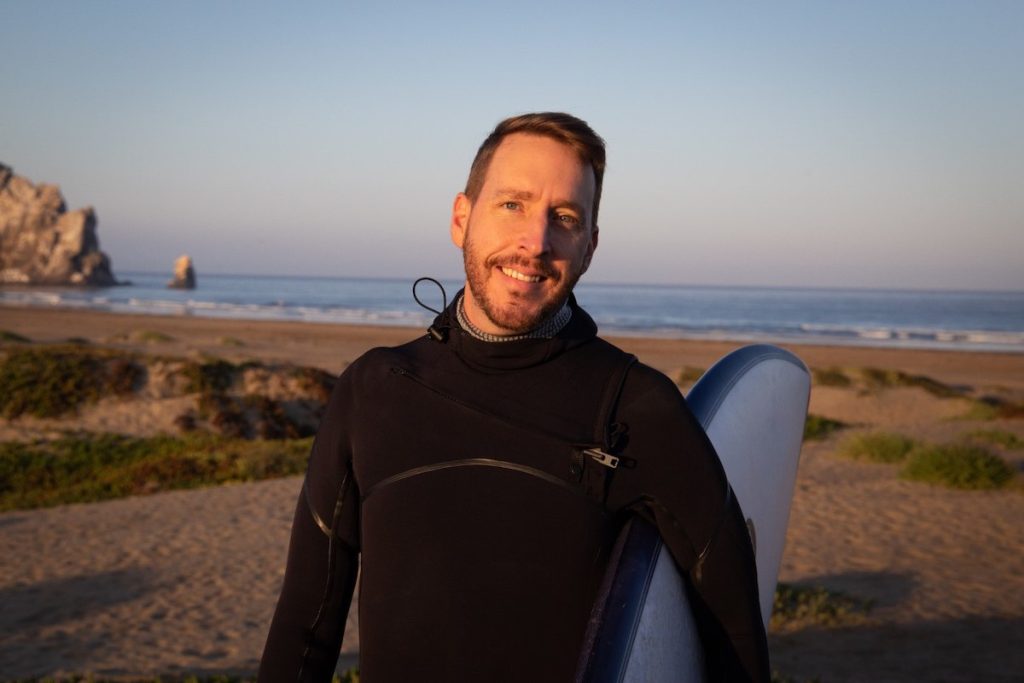
City Council Candidate Casey Cordes 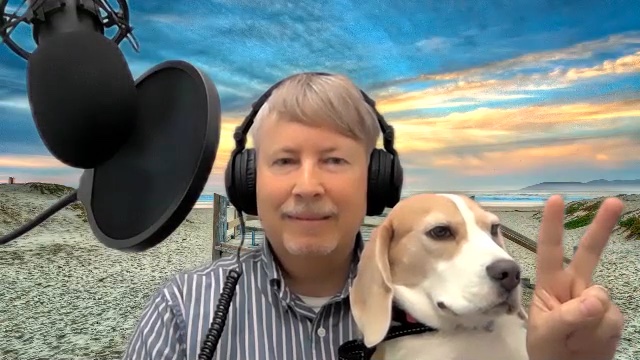
City Council Candidate David “Dave” Duringer 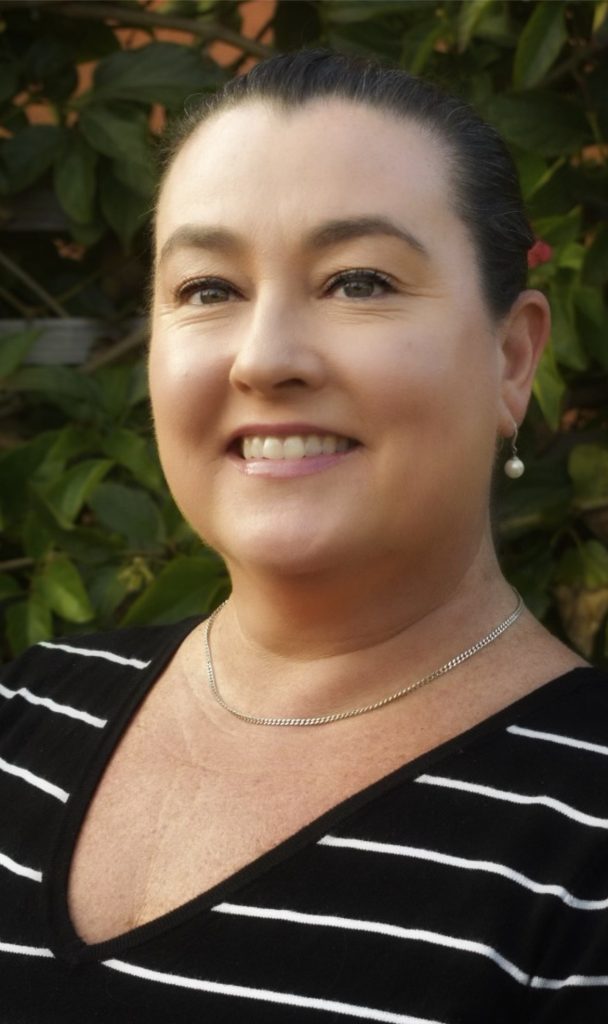
City Council Candidate Sarah Robinson
Casey Cordes (36) is in Marketing Communications and has lived in Morro Bay for six years.
“I want to be a voice for the future of Morro Bay, the future of our small businesses, our families, and our natural environment. I have built a career on listening, learning, and sharing, and I hope to use those skills to improve public participation and public trust in our local government.”
Why do you support or oppose Vistra Energy’s proposed Battery Energy Storage System (battery) plant?
Mayor Candidates
Heading: As a current City Council member, I have no position on the proposal. Vistra, the private property owner of the plant, has proposed a project that includes battery energy storage and demolition of the stacks/existing building. The proposal is currently going through the usual administrative review process in the City’s development department, including CEQA Analysis, and an EIR is being completed. Once this information, which is extensive, is finalized, it will be presented to the planning commission for public hearings and a recommendation to the City Council. The City Council will review the information provided and hold public hearings as well. Only at that time, will there be adequate information regarding the proposed project for the city Council to be able to make a decision to support, or deny the project.
Wixom: There are too many unknowns. We are just beginning to see numerous failures at other facilities and this proposed project is in the heart of our community. I support renewable energy storage, but at this point, not at this location.
City Council
Landrum: As someone who has a deep reverence for nature, I support clean energy. After enduring many decades living under the shadows of the toxins of the PG&E smokestacks, it’s not appealing to replace those with another potential health hazard. To me, this is a poor location for such a battery plant as these are not without risks. I have serious concerns as it’s right in the heart of the Embarcadero and next to 800-plus children at MBHS.
Edwards: The facts are our state is moving toward renewable energy and we have a utility company, Vistra, who owns land on our waterfront that wants to put in a battery storage plant. The current council has been in negotiations as to the possible direction of that development and they are ongoing. I’d like a spot at that table to learn more about the safety and environmental impact of a project of this nature. Another fact: Vistra has no plan. If there’s no plan, including the removal of the stacks by 2028, they’ve agreed to pay the City $3 million. That’s a small amount compared to what a project this size could bring in revenue to our City. Clearly, the project should be considered, as we need the money.
Duringer: “Unreliables,” such as solar and windmill energy are expensive, dwindling as sources in the evening, just as demand increases. Although a BESS is a partial solution to this problem, I strongly oppose Vistra’s proposed battery project for the following reasons: FIRST: Incineration is a really horrible way to die; incineration while breathing toxic fumes is said to be worse. Even if you believe in the technology of unreliables, why would you want to locate this dangerous system near thousands of homes, most of which are occupied by Democrats who typically support unreliables? At least find a site where you can incinerate Republicans and keep the gravy train running longer! On that note, a few nights ago multiple City and County fire engines responded to a fire at my neighbor’s house, across the street from me. The cause? A couple of lithium batteries were being charged in the garage (the little ones that power drills). SECOND: The technology became obsolete on Feb. 24, and while BESS sounds nice, NORDSTREAM 3 would have been a much better name for this project. Unreliables like solar and windmill rely on supply from China which has a near-monopoly on the requisite rare earths. These technologies are interesting and fine for the market to play with at the fringes, but shifting energy production to unreliables now is insane given the geopolitical realities of Ukraine and Taiwan, when we have several hundred years of fossil fuel reserves. Just a couple years ago under Trump, we were a net exporter of energy. Europe now realizes its folly of relying on Russian gas lines. While they may talk of unreliables (actually calling them renewables) as an eventual solution, what they are rushin’ to get now to avoid a cold winter is gas, anywhere they can get it, by pipeline or shipped as LNG. THIRD: Fossil fuels are greener than unreliables, which are highly polluting not only at the battery disposal stage, but even the production stage. For example, the production of lithium uses a huge amount of water, depleting local aquifers wherever produced, and polluting groundwater. FOURTH: Morro Bay will be left holding the bag of batteries when we shift from unreliables back toward fossil fuels. “Climate change” f/k/a “global warming” f/k/a “global cooling” doesn’t even register as a blip on political radar because most people don’t believe in man-made global warming. They don’t trust the “science” anymore, especially after several years of COVID fascism. Yale study last year found that less than half of SLO County residents believed global warming would affect them personally. FIFTH: Opportunity cost is huge, more than ample to pay for removal of the stacks. Vistra will cough up the $3mm penalty and that will be a good downpayment on the $30mm removal cost, remainder financed by developers who take community feedback into account, including respectful treatment of Indian sacred grounds. We benefit much more in the long run and even short run by developing a community theme and focus on building that now, improving as we go. One thing for sure: our theme is not industrial.
Robinson: My main stance on this proposal is safety. The third fire at Moss Landing in September does not lend confidence that this is a safe enterprise for the middle of a tourist district.
Cordes: I don’t believe we are ready for a project of this magnitude in the middle of our City but I am not an expert on the risks and will lean heavily on our first responders to help determine if we can ever support a facility like this.
I encourage all our citizens to participate in the master planning process for this project, as it will likely be years before this comes to the council for a vote and your feedback in the process will be critical to making the right choice. I believe the best candidates for city council do not pre-judge decisions, they research and review and ask questions right up to the vote. That will be my approach to all decisions as your representative.
There are several potential large parcels that are starting to seek annexation, zoning changes, and subdivisions with developments of pretty high densities, potentially adding upwards of 600-plus new housing units. What is your preferred approach to dealing with this potential growth spurt?
Mayor Candidates
Headding: The City desperately needs to significantly increase the availability of affordable/workforce housing. I believe any private property owner/developer that proposes a project must go through a thorough vetting process, including initial analysis through our planning department and determination of appropriateness of parcel zoning, and compliance with availability of city infrastructure that might be needed to service the proposed project. After completion of this extensive review by the planning department, the project then must be presented for review by the planning commission which would include public hearings, compliance with zoning codes, compliance with general/local coastal plan, EIR if needed etc. Once the Planning Commission has completed their review this would then be Sent via a recommendation to the city Council for further review, public hearings, evaluation and then decision.
Wixom: The state has recently come down with new mandates for housing. Morro Bay is required to work towards those mandates. I am concerned with our lack of available infrastructure to handle this potential growth, as well as whether it will be affordable housing vs. more vacation rentals.
City Council Candidates
Landrum: Any potential growth should be approached with vision and logic. The most basic question is does Morro Bay have water to supply these potential units? Also what would the impact be on our roads, traffic, schools, services? Does growth alone solve lack of workforce housing we struggle with, or further exacerbate the problem?
Edwards: On Aug. 23, the current council voted 3-2 on the rezoning from low density to medium density in the area of town near Bayside and Casa de Flores. To my knowledge, the developers do not have a plan. In my opinion, the City needs to have a set of standards and specifications as to what our requirements are before we proceed on further development, including density, height restrictions, traffic flow, and even esthetics. We need to consider the adjacent neighborhoods and businesses that may be impacted as well. Ultimately, I believe if the City has an easily defined master plan wee can decide what projects make sense. Lastly, housing is a problem in Morro Bay and we must consider all development opportunities to provide for our workforce, seniors and low income families.
Duringer: We need growth, and we need housing that is affordable to that portion of the workforce that must live here. Not everyone needs to live in Morro Bay. Some can work remotely at least on some days, and others will be happy to commute. (The commutes down in SoCal are much longer than what people complain about here.) I reject the notion that CO2 from cars causes climate change and it’s insulting, but also humorous, to see that stated as scientific fact in the Chamber’s report without noting substantial disagreement on the issue of man-made global warming, especially given the short commutes. Nevertheless, some low-income housing will be needed. The best way to create that housing is with SB9 ADUs and lot splits, for example in North Morro Bay where there are many dilapidated structures and superannuated housing in need of revamp, which the extra unit(s) can help finance. Many of these properties have great views and when improved, will add tremendously to the tax base. Why not give families in single-family homes the option, once the kids are gone, to rent out to parents or maybe a low-income worker that “needs” to live in Morro Bay? This huge opportunity for families (“by right” under SB9) could be wiped out by climate-jiving developers getting giant subsidies to build higher density, Below Market Rent (BMR) properties that undercut the market for honest mom-and-pop ADUs. We need additional low-income housing, but we can provide it better with gradual entry of ADUs into the market, and this will benefit Morro Bay families. No need to line the pockets of developers with state subsidies for large, ugly multi-family housing not in sync with Morro Bay’s character.
Robinson: Water first. It must be demonstrated that the 5 percent allotment from the State Water Project is sufficient to cover current occupancy and future growth. If potable water is not an issue, then each proposal must demonstrate through an EIR that it will contribute to the enhancement of the City, not burden us. A main way of demonstrating this is to show how much and what kind of affordable housing they are willing to offer.
Cordes: I don’t support growth outside the limits of The City of Morro Bay, but I do believe we need to seek out honest developers to build workforce housing (not single family homes) in the high-density lots we currently have sitting vacant. Through careful zoning updates that the Planning Commission has recently completed, we now have a blueprint for where new housing can (and should) be built and where new hotels and motels can not be built.
The City is endeavoring to produce a Master Plan for the power plant property. What do you believe is the best re-use of the powerhouse/stacks property (assuming they are removed)?
Mayor Candidates
Headding: Part of the process for Vistra’s submission of the battery energy storage facility and removal of the stacks/main building will include the development of a master plan in conjunction with the City of Morro Bay. My position would be to take extensive public comment with regard to areas that are potentially developable to get an understanding of what the community would like to see.
Wixom: I recently attended the community workshop held by Vistra and there were many ideas brought forward. Community and visitor serving seem to garner the most support. There are many options that would provide community benefits.
City Council Candidates
Landrum: The community has come up with many great and creative ideas over the years for this property. After the contaminated soil is cleaned up, it’s got endless potential and with 120 acres many are possible at once. Some among them that stand out are a parking lot for shuttle service, an aquarium or aviary, event center, permanent homes for Pacific Wildlife Care and Marine Mammal Center. I would love to see a Cultural Center or museum dedicated to the local Salinan Indian tribe.
Edwards: Assuming the stacks are removed by Vistra, and there’s a plan, they are a part of our history and as such there may be a way to incorporate them in an artistic way. We are a very artistically inclined community, I think it would be a wonderful to involve the Morro Bay Art Association. Maybe there could be a public forum to come up with some collaborative ideas. As to the development of the site, I’m open minded at this point and look forward to further community involved discussion.
Duringer: The City is endeavoring to produce a Master Plan for the power plant property. What do you believe is the best re-use of the powerhouse/stacks property (assuming they are removed)? See answer above re: BESS. There were lots of great ideas proposed at the recent community planning workshop on this and more input is needed. The WORST idea at that meeting was ten times better than BESS, which most people were quite obviously against. We are a tourist destination, and most of the ideas were centered on that. I think we should look at building a convention center, as part of the solution.
Robinson: Re-use depends on what level of clean up the City can get from PG&E. Otherwise, the cart is before the horse.
Cordes: I believe we should seek out projects that build off the existing reputation of Morro Bay, namely our natural beauty and birding community. A large aviary and museum could be a source of research for local institutions, an expanded location for wild-animal rehabilitation, and a powerful draw for new visitors. Combine that with a mixed-use zone with commercial and residential in a two-story format similar to the Monterey waterfront and you have a great expansion to our waterfront.
Morro Bay has a drug, alcohol, and petty theft problem. How would you propose it be addressed?
Mayor Candidates
Headding: Once again, this is property owned by Vistra, which is private property. However, their desire is to enter into a process that involves significant community input before moving forward to re-develop any areas that might be developed. There are also a number of environmental issues (deed restrictions ) that must be considered on certain areas of the property that also may have Impacts On Any considerations for redevelopment.
Wixom: We must continue to support and work with our local public safety, as well as county and state agencies to address these issues.
City Council Candidates
Landrum: To me it’s obvious that drug and alcohol problems are hardly unique to Morro Bay but are a worldwide problem. Petty theft also is bigger than Morro Bay, due to newer state legislation, it more difficult to enforce.
Edwards: I think every City in America has its issues whether it be crime related to drugs and alcohol or petty theft. What I do know is I experienced what it’s like to be violated by another individual or two. During the COVID lockdown, my business was robbed. I feel fortunate that we have a responsive police department. Although the person or persons responsible weren’t apprehended, I feel better knowing we have our police department.
Duringer: Growth, with business-friendly and family-friendly policies; and less socialism, it attracts pests.
Robinson: These are perennial problems that all towns face. At one time, the City had a community alcohol and drug task force under the auspices of the police department. Maybe it is time to resurrect it. I would want to hear from the police chief if he knows whether the theft is related to alcohol and drugs, or if it is a stand-alone issue.
Cordes: Having met with the police chief and participated in a ride-along with our officers, I believe the premise of this question may be leading us to believe this problem is growing or out of control. That is incorrect. We do face the consequences of state and local district attorneys being less willing to prosecute nonviolent offenders, but that is something our police force is well equipped to handle. Our strategy should be to trust the staffing and resource recommendations of our police chief, who is the true expert in managing Morro Bay crime.
The City will soon tear down the old sewer treatment plant on Atascadero Road. What would be the best redevelopment of that property?
Mayor Candidates
Headding: Drug and alcohol problems are pandemic throughout our country. These issues, in my opinion, are best handled through community education and awareness programs, especially in schools, law-enforcement training, and access to appropriate mental health and substance abuse programs must be made available to individuals with these types of problems. Our community resources service center does an excellent job in referring individuals with these kinds of problems to the appropriate resources that are available in the county. Additionally we need to advocate at the council level for an increase in resources made available through our county programs. Petty theft is a law enforcement issue. Education made available to our businesses by both the City and through our Chamber of Commerce regarding petty theft issues could be very helpful in identifying and enforcing Such problems.
Wixom: There will be limited re-use opportunities for this site as the Coastal Commission has placed restrictions on it. Perhaps add on to the existing businesses in that area with new RV facilities.
City Council Candidates
Landrum: After the site has been cleaned up, it depends on two things. What the Coastal Commission will allow and what happens with negotiations with Cayucos, our joint owner in this property.
Edwards: Like many development opportunities we have in Morro Bay, I’m not sure that the old wastewater treatment plant has been agendized or a workshop held, per se. As far as I’m concerned we really need top take a look at our City from a holistic perspective. This property will more than likely be developed at a later date than the battery storage site, for example. My greatest concern is traffic flow. It’s been 6 to 10 years since the Hwy 41 exit was examined by Caltrans and yet nothing has been done. It’s highly likely the road from the old plant would come into play with all the development projects from the Waterfront.
Duringer: More community input needed. Should obviously be complementary to whatever is developed on MBPP site, tourist focused.
Robinson: Firstly, the sewer plant redevelopment, like the power plant site, depends on the level of clean up that is done. Secondly, it depends on what the CA Coastal Commission is willing to allow in light of their 2012 declaration.
Cordes: Workforce housing is the best use of the land that previously held our sewer treatment plant. Our small businesses are starved for employees, your children are looking for homes of their own, this is a chance for us to look forward to the Morro Bay of the future and try to anticipate the needs ahead of us. Let us say yes to more families and workers by attracting a developer that will work with us to secure the future we want.
Voters are being asked to support a $120 per year property tax increase to support repairs and maintenance of publicly owned harbor facilities (Measure B-22). Why do you support or oppose Measure B-22?
Mayor Candidates
Headding: The old sewer plant is a joint venture between the City of Morro Bay in and Cayucos. In order for any consideration of redevelopment to occur, first there must be agreement between these parties on demolition, and participation either jointly or independently in any future development. I would look to seek community input on thoughts for redevelopment of this area before making any decisions. I support this initiative, as funding for our harbor infrastructure is sorely lacking and has been for decades. The Embarcadero is the area of the City that attracts tourists and the infrastructure must be maintained. The current capital needs are estimated to be between $600,000 and $800,000 per year. The funding provided by this initiative if it passed word provide approximately that amount of money annually for Harbor maintenance, repairs, and façade improvement.
Wixom: The harbor is falling in disrepair as we lost revenue from the power plant outfall canal lease. My concern if this passes, is that the money goes to the general fund and is allocated from there. There is no sunset on the tax, so it never ends. This tax places the responsibility of maintaining the harbor on property owners rather than a shared cost. There are other options, including some of the Measure E taxes collected from the waterfront businesses as well as TOT collected from waterfront hotels.
City Council Candidates
Landrum: While I believe the harbor facilities are of utmost importance to the City, I’m not in favor of the measure. I’d like to see a timeline with a schedule of work. I don’t like that the tax amount increases yearly with inflation and that there’s no end date. I believe there have to be ways to fund these repairs other than going after taxpayers again.
Edwards: It’s never the best option to go out to our property owners for another tax. However, I believe a $120 a year parcel tax is reasonable in order to maintain one of or biggest assets, the harbor. I want to be clear that it’s a short-term solution and shouldn’t be looked at as a long-term fix. Unfortunately, we’ve allowed for the Harbor Enterprise Fund to deplete beyond what it ever should have gotten. I hope we can learn from the mistakes and continue to look at ways to generate additional and stable revenue for the fund like paid parking, an idea that’s already been examined and has been implemented by most of our neighboring coastal towns successfully.
Duringer: I oppose B-22. The facilities must be repaired and maintained, but this is an example of kneejerk taxation on all city parcels. There should be more auditing of leases to make sure lessee’s have met all obligations and are truly paying fair market rent, before resorting to any other funding source. Next, consider a special assessment district of parcels closest to the waterfront, most likely to benefit.
Robinson: I oppose Measure B-22 for a few reasons: 1: This tax is in essence forever. It will take another citizens’; initiative to undo it — write the language, collect signatures, go before city council. Who and how many will make the effort. 2: This tax climbs; it is not staying at $120. The annual increase varies each year depending on inflation. It increases exponentially, which means faster. 3: “Preventative maintenance” is a vague term. Cleaning is a maintenance task; funds could be diverted to pay for cleaning restrooms. 4: The $680,000 is a drop-in-the bucket. Infrastructure costs multi-millions of $$. 5: State and federal money pay for infrastructure. Due to the quantity of money required, grants and loans are the typical way to fund these projects. 6: It’s possible to get government money. Morro Bay just received two grants specifically for the Harbor Fund. 7: Those who use, should pay. There is no link between owning property in Morro Bay and using its Harbor facilities. 8: Taxation without representation. Property owners who do not live here do not get to vote on the measure. 9: Requires only 50 percent-plus-one to pass, not two-thirds. Normally, tax increases are proposed by a government agency and take two-thirds (66 percent) of votes to pass. Unexpectedly, this was initiated by residents, so only a simple majority of votes is required to pass. 10: There are other sources of money. Some possibilities include letting the Harbor Fund keep the bed tax from Embarcadero hotels, keep the sales tax from Embarcadero businesses, charge for parking, reduce the General Fund overhead or allocation charge, and participate in money from Measure E sales taxes.
Cordes: There would be no Morro Bay today without the Embarcadero and if we don’t invest in capital improvements to maintain it, there will be no Morro Bay in another 60 years. Recent expenses on waterfront infrastructure have massively exceeded our allotted budget and more work is on the way. I support B-22, imperfect as it may be, because it represents our community coming together and investing in our future. If the public passes this measure, we will look for future ways to offset the new costs for renters and fixed-income residents. If the measure fails, we will be in desperate need for a new path to funding for this essential work.

